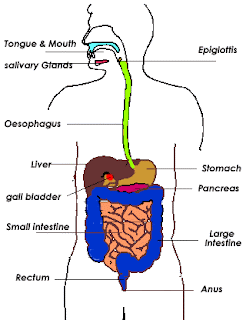Ventilation : When air is inhaled into the alveoli , then exhaled.
Gas exchange : is the diffusion of co2 and o2 between the alveoli adn the capilaries.
Cell respiration : O2 is a reactan for aerobic cell respiration
CO2 is a product of aerobic respiration cell respiration. (The chemical process occurring in the mitochondria where energy is released as ATP)
6.4.2 Explain the need for ventilation system
- We need ventilation system to get rid of carbon dioxide. to mantain a concentration gradient, always more co2 in blood than alveoli , and always more o2 in alveoli than blood
- Air wouldnt enter o leave our lungs by itself.
http://www.jonbarron.org/article/physiology-respiratory-system
6.4.3 Describe the features of aleveoli that adapt them to gas exchange
-Large surface due to the combined sphercial shape
-is flattened single cell thicknedd of each alveoulus , this prevents the gases from hacing diffuse through more cell layers
-moist inner linging of alveous , this characteristic makes diffucsion more efficient,
6.4.4 Draw and label a diagram of the ventilation system , including trachea lungs, bronchi , bronchioles and alveoli
6.4.5 Explain the mechanism of ventilation of the lungs in terms of volume and preassure changes caused by the internal and external intercostal muscle, the diaphragm and abdominal muscles.
Inhaling : The external intercostal muscles contract , moving the ribcage in and out. The diaphragm contracts moving down .(increasing the volume of the thorax) The preeasuure of the thorax drops below atmospheric pressure.
Exhaling : The internal intercostal muscles contract moving the ribcage down and in. The abdominal muscle also contract pushing the diaphragm up.The movements decrease the volume of the thorax. The pressure condition is exactly the opposite when we inhale.
.JPG)


.JPG)
.JPG)








.JPG)
